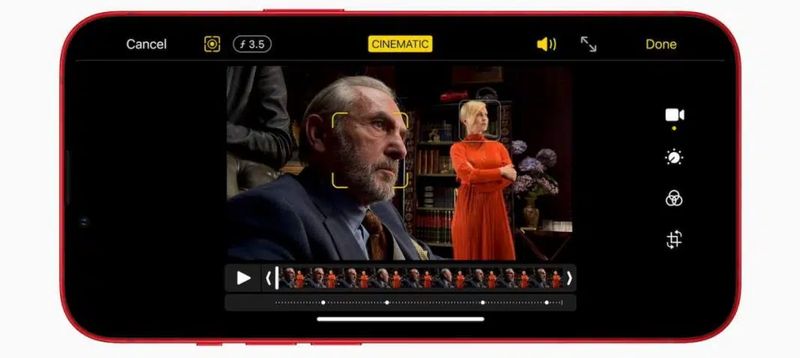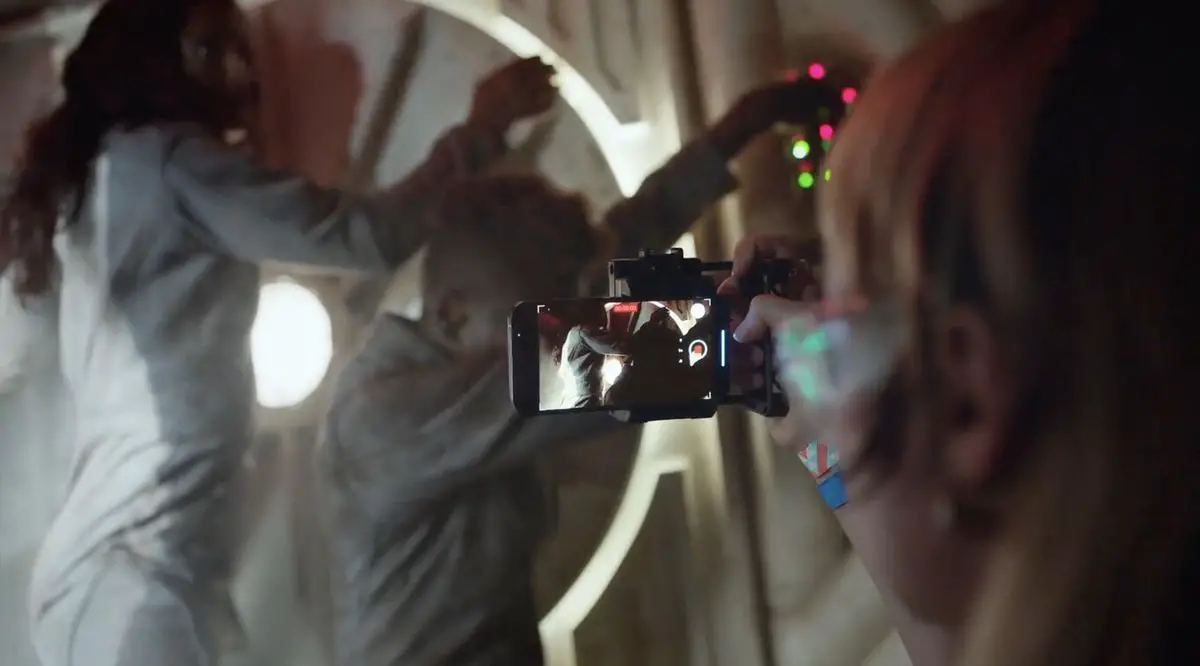Apple also introduced a new video system for the iPhone 13 and iPhone 13 Pro: Cinema Mode. This new feature, which is available on the newest model of its flagship phone only, takes advantage of the iPhone’s capabilities. As a result, Apple has created a new narrative tool that will undoubtedly inspire many future creators.
What is iPhone 13’s Cinema Mode?
The iPhone 13’s Cinema Mode is a direct descendant of the film industry. It is a narrative device that serves to help the viewer focus on what requires their attention in the story. By focusing and blurring certain subjects, objects, or parts of a scene, the viewer’s eye can be guided back and forth.
The bokeh effect was first introduced on the iPhone 7 Plus five years ago. Thanks to it, we blur what’s behind a subject, focusing all the attention on it. No matter what’s going on around him or if he’s in a crowded place, all that disappears.
This video mode has one major limitation: it shoots at 1080p and 30fps. However, it is recorded in Dolby Vision HDR.
Apple offers a greater range of creative possibilities. Now, with Cinema Mode, the effect is applied to video instead of still images. The user has complete control over the subject’s focus or blurring at all times, allowing him to modify it even after the fact.
How does the iPhone 13’s Cinema Mode work?
Holding any iPhone 13 model in your hand, as they all have the A15 Bionic chip, just open the camera and slide to the left until you find the word “Cinematic”.It’s right after the regular video mode, leaving for later the slower-motion and time-lapse mode.
This mode has the ability to record several focus points, which will be used to change the effect between them. This is done automatically by the iPhone, indicating with a yellow frame which one is active at that moment. The rest will appear in a gray frame.

The iPhone may anticipate people or things that will soon enter the frame using the ultra-wide-angle lens. And it prepares the rest of the system to anticipate this, being able to shift the focus to the new protagonist if necessary. At the same time, Apple ensures that the cameras record the depth information of the scene in real-time.
The A15 Bionic chip is the real culprit that Cinema Mode did not make it to previous iPhones.
Apple also modify the movie after it’s been recorded. Allowing us to adjust the focus to the person or object we desire and in a simple manner. That is, if we don’t like the automatic or manual blurs that we’ve produced with the Cinematographic Mode, we don’t have to redo the scene. We may do it later if necessary.
A new way of expressing oneself for a new generation of creators
Those of us who have been using smart devices such as the iPhone or iPad for a long time are becoming increasingly reliant on certain methods of usage. However, there are a large number of youngsters who have never lived under anything else. And as a result, they may utilize these technologies in ways we haven’t seen before.
Creators are always looking to tell stories. Cinema Mode is a new feature that permits them to communicate differently than we’ve been used to. Apple has put extremely advanced functionality into a device that starts at $949 at the exchange rate. And in just one year, it will be in the hands of tens of millions of people around the world.
Apple has made available to millions of consumers a highly sophisticated technology that is also simple to use through Cinema Mode.
As time goes on, subsequent models and inevitable modifications will be as common as portrait mode itself, which has revolutionized iPhone photography. It has a lot of flaws and restrictions, such as 1080p resolution, at the moment. But in its present condition, it already serves as an excellent storytelling tool.
No need to want to make a short film contest level. Cinema Mode will enhance the day-to-day memories that we now capture in standard mode. They will coexist with normal videos, creating beautiful Photo Memories of our families, friends, vacations, and pets.





